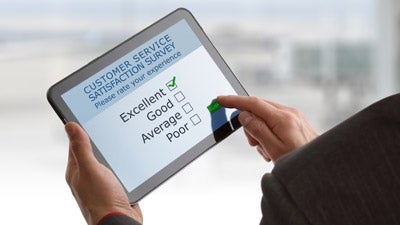
Have you noticed how many ridiculously bad experiences we put up with as consumers? This article is about how some companies are turning that awfulness into opportunities to grow their profits, brands and customer loyalty while leaving their competitors behind.
But before we get there, let’s review some truly dreadful and, unfortunately, all-too-frequent experiences we all go through. See if any of this sounds amusing and/or sadly familiar:
Your typical day may start with an artfully pierced and tattooed 20-something rolling his eyes while correcting you for ordering your $4+ cup of coffee the wrong way. Later you may hear, “The doctor is ready to see you now,” when he really should be apologizing for making you sit in the aptly named waiting room (surrounded by a cesspool of germs) for an extra 45 minutes—AGAIN. Next, move on to the local department store where you’ll have to say “No” at least three times to the commission-driven offer of a protection plan, a credit card application, and the club card.
You have a business trip? Lucky you. TSA stands for “Thousands Standing Around,” so it will only take 45 minutes for the employees to watch the one person actually working make you get undressed and rifle through your carry-on. The taxi driver will claim that his credit card machine is broken because he prefers cash. At the hotel, you’ll be charged for Internet connection in your room, even though the people in the lobby are getting it for free. Thirsty? Instead of touting the purity of the room’s tap water, you’ll have an option of a $6 or $12 bottle of water.
On the flight home, you will be seated next to a 400-pound man, eating a foot-long, garlic-infused Meat Monster, who will fall asleep during the climb and drool on you for the remainder of the flight. At this point, you need a cocktail, but unlike your cab driver, they no longer take cash.
For years, the providers of these products and services have turned a deaf ear to our complaints. Due to a lack of options, information, and control, people like you and me just put up with one bad customer experience after another.
Thankfully, those days are coming to an end.
That rumble you hear in the distance is a tectonic shift of epic proportions, fueled by fed-up consumers who now have the technology, information, social networks and choices to create the experiences they want. For businesses asleep at the consumer experience wheel, the shift is about to hit the fan because we are now able to complain in the only real way that matters to many companies: with our wallets.
How do you know your company may be in trouble? There are some telltale signs beyond the complaining of your customers: Your margins are shrinking; your competitors are consolidating; there are fewer “traditional” entrants in your category; and there is usually a growing, underserved (and frustrated) segment of customers—such as Millennials (the 20- and 30-somethings)—who are driving the technology wave.
Changing Customer Experience (CX) Is Tough
If you’re looking for higher margins, more brand loyalty and a starting point to introduce innovation within your organization, creating a wonderful customer experience is the place to start because it gives you an unfair competitive advantage.
But as you know, it is often difficult to change the course of a business that has been successful doing things the same way, for the same people, at comfortable margins, for many years.
Why is it so difficult to change? Here are four common mistakes:
- Leadership is not aligned. Leadership in your organization needs to be crystal clear on the experience your consumers want and what you are going to offer. That means spending in-depth time with your customers—and the people you would like to be your customers—to understand their needs. You can’t stop with answers like “I want a faster transaction.” You need to know what customers mean by faster and how they expect “faster” to feel.
- Your interpretation of the need is wrong. Too often, people miss the nuances in translating perceived needs into the correct best experiences. For example, hotels may rush to give away free Internet connections when it wasn’t the cost, but the complexity of getting online that had customers frustrated. They might be willing to pay for it, if all it took was one click of a mouse.
- You don’t involve the organization. People support what they create. By opening up CX initiatives to a larger group of people in your organization, you make the ideas stronger and overcome the inertia and cultural antibodies companies have to change.
- You don’t test in market. The desire to have a “fully baked” solution before you roll it out robs you of the consumer feedback loop that would make the idea better and more appealing to your customers.
That’s all the bad news.
The good news is that these challenges can be overcome. For proof, you don’t have to look any further than an insurance company, of all places.
Earlier this month, the global research firm Forrester awarded Blue Cross Blue Shield of Michigan with their Outside In Award, which is given to organizations “that excel at the practices needed for planning, creating, and managing a great customer experience.”
I am proud that Blue Cross Blue Shield of Michigan is our client. But the bigger point is: Winning an award for customer understanding in health care is notable because it is, thankfully, a sign of things to come.
And speaking of things to come…next time: Why Improving The Customer Experience Matters: A Love Story.
This article was originally published by Free the Idea Monkey
Published: August 1, 2013
3344 Views
3344 Views











